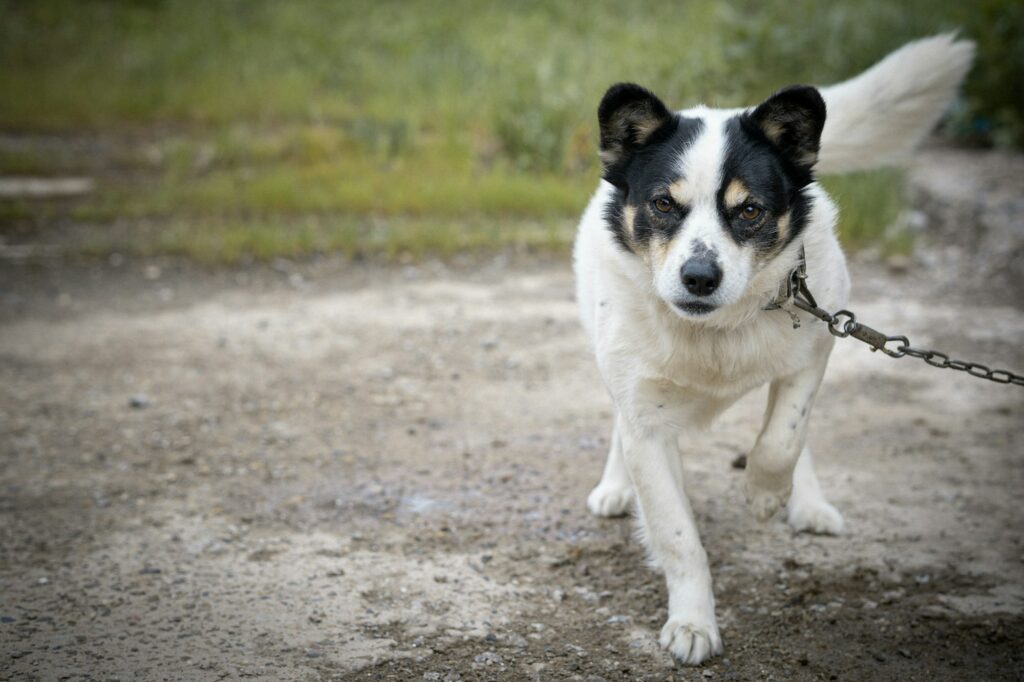Dog fighting, a cruel and illicit practice, often lurks in the shadows, hidden from the view of law enforcement and animal rights organizations. This abhorrent activity not only leads to immense suffering for the animals involved but also fosters a culture of violence and disregard for life. It is, therefore, of utmost importance to understand and recognize the signs of dogfighting. This knowledge empowers individuals and communities to become vigilant observers, capable of identifying potential situations of animal cruelty. By learning to discern these signs, we can play a vital role in reporting suspicious activities to the appropriate authorities, thereby contributing significantly to the effort to eradicate this heinous crime.
Signs of Dogfighting
In the following section, we will delve deeper into the telltale signs of dogfighting. These indicators range from peculiar physical conditions and behavioral patterns in dogs to specific equipment and spaces often associated with this illicit activity. Understanding these signs is critical in identifying and reporting potential dogfighting operations.
Dogs on Heavy Chains

One prevalent sign of dog fighting is the sight of dogs on heavy chains. This is not a typical or humane method of containment for dogs. Instead, it’s a cruel practice often associated with dog fighting rings. The dogs are kept on these heavy chains to build muscle and strength, preparing them for fights.
These chains are usually much heavier than what would be used for a pet dog and can cause injury and distress to the animal. The sight of multiple dogs chained in this manner, especially in a secluded or hidden area, can be a significant indicator of a dog fighting operation.
Treadmills
Treadmills are another common sign of a dogfighting operation. These are not the ordinary treadmills that humans use for exercise but are specifically adapted for dogs. In dogfighting, these treadmills are used to build up the dogs’ endurance and strength. Dogs are often forced to run on these treadmills for extended periods, sometimes with heavy chains or weights attached to them. This brutal training method causes the dogs significant distress and can result in severe injuries. If you come across a dog being subjected to such conditions, it is a potential sign of dogfighting.
Scarred Dogs
Scarred dogs are often a clear and distressing sign of dogfighting. Dogs involved in this cruel activity tend to have multiple scars, wounds, and other signs of injury, particularly around the face, neck, chest, and forelegs. These injuries are usually a result of the intense and brutal fights they are forced into. It’s important to note that not all scars are signs of dogfighting. However, multiple, severe, and recurrent injuries in these specific areas, coupled with other signs of dogfighting, may suggest involvement in this illicit activity.
Breaking Sticks
Breaking sticks are notably distinct signs of dogfighting. These tools, often fashioned from hard materials like plastic or wood, are widely used in dogfighting rings. They are specifically designed to pry open the jaws of dogs during or after an intense fight, a procedure that enables handlers to separate the combatting animals. Using breaking sticks is not typical for normal dog owners or during standard dog training methods. These tools are inserted into the back of a dog’s mouth, wedging between the upper and lower jaws, which can cause significant discomfort and even pain to the animal. Spotting these devices, particularly where dogs are present, can raise suspicions about potential dogfighting activities. When breaking sticks are found alongside other signs of dogfighting, such as scarred dogs, heavy chains, or modified treadmills, it further strengthens the likelihood of a dogfighting operation.
Washtubs and Sponges for Bathing Dogs are Signs of Dogfighting
Washtubs and sponges for bathing dogs can sometimes be signs of dogfighting activities. In such operations, dogs are often meticulously bathed before a fight to remove any substances that could affect the other dog’s grip or performance, such as poison or drugs.

Large washtubs with sponges or other bathing equipment, especially when found in conjunction with other signs of dogfighting, can be a potential warning sign. However, it’s important to remember that these items alone do not confirm dogfighting activity, as they are common in households with dogs.
A Fighting Pit That Has Scratch Lines
Discovering a pit marked with scratch lines or claw marks could be a sign of dogfighting, providing a chilling glimpse into the brutal world of these illicit activities. These pits, often makeshift, serve as arenas where these horrifying fights take place. They are usually tucked away in secluded areas, hidden from law enforcement’s and concerned citizens’ prying eyes. Scratch lines drawn across the pit provide an eerie starting point for the dogs forced into these battles, setting the stage for the violent encounters that follow. Similarly, claw marks etched onto the walls or along the edges of the pit provide a silent yet strong testament to the ferocity of the fights the dogs are made to endure. These signs together form a disturbing tableau revealing the harsh reality these animals face. If you come across such a pit, especially when it’s found alongside other signs of dogfighting, it strongly suggests the presence of a dogfighting operation. It is crucial to report such a discovery promptly to local authorities, as it can play a significant role in disrupting and ultimately eradicating these cruel practices.
A Spring pole
One of the potential signs of dogfighting is the presence of a device known as a spring pole. This contraption is typically constructed from a large spring attached to a rope, with a lure or bait attached to the end. The intention behind this device is to aid in training dogs for fights, a disturbing aspect of dogfighting operations. Dogs are encouraged to leap up and bite the dangling bait. As they do so, pulling and thrashing about, they unknowingly build their jaw strength and stamina, which are critical skills in the cruel world of dog fighting.
This training tool is often hung from a sturdy tree branch or a beam, positioned so that the bait swings just within the dogs’ reach. This placement encourages the dogs to repeatedly jump and bite, increasing their endurance and physical capabilities. The presence of a spring pole may not always indicate dogfighting, as some dog owners use them as a form of exercise for high-energy breeds. However, when found in conjunction with other signs of dogfighting, such as scarred dogs, heavy chains, modified treadmills, or breaking sticks, a spring pole can become a significant cause for concern.
When identifying signs of dogfighting, it’s crucial to understand the brutal training methods used in these operations. The spring pole exemplifies this harsh reality, being a tool that, while seemingly innocent, can be a part of a much larger and more distressing picture. Recognizing such signs of dogfighting can help in the fight to put an end to this cruel practice.
A Jenny Mill or Cat Mill
A jenny mill, also known as a cat mill, is another one of the signs of dogfighting that you should be aware of. This contraption is similar in structure to a giant hamster wheel, and it’s primarily designed for dogs to run on, thus enhancing their endurance and physical strength. It derives its name ‘cat mill’ from a particularly cruel practice common in dogfighting operations, where a small prey animal, such as a cat or a rabbit, is attached to a pole in the center of the wheel. This cruelly exploited animal serves as bait to motivate the dogs to chase and run, thereby building their stamina and predatory instincts. While the wheel can technically be used for exercise, it’s predominantly associated with dogfighting due to its frequent use in these illicit and brutal training methods.
In a dogfighting context, the jenny mill or cat mill is not just a tool for exercise. It’s a device that plays a critical role in conditioning dogs for fights. By exploiting the dogs’ natural instincts to chase and capture prey, this tool helps instill aggressive behaviors and enhances physical capabilities that are advantageous in a fighting scenario. It’s important to note that using such a device is inhumane and illegal in many jurisdictions, owing to its association with dogfighting.
Dogfighting Publications
The presence of dogfighting publications is another significant sign of potential dogfighting activity. These publications, often available in print or digital formats, contain information about upcoming fights, training methods, breeding techniques, and other dogfighting-related content. They serve as a medium for those involved in this illicit activity to connect, share information, and promote their cruel practices. It’s important to remember that owning these materials may not be illegal. Still, it could indicate involvement or interest in dogfighting, especially when found alongside other signs of dogfighting. These publications should be taken seriously, and their discovery should be reported to the appropriate authorities.
Vitamins, Drugs, & Other Vet Supplies are Signs of Dogfighting

An unusual amount of veterinary supplies, drugs, and vitamins can also be a potential sign of a dogfighting operation. These items are often used to treat injured dogs and enhance their performance. Drugs such as steroids may be administered to increase the dog’s muscle mass and aggression.
Vitamins are usually given to improve the dog’s overall health and stamina. If these items are found in large quantities, especially in combination with other signs of dogfighting, it could indicate the existence of a dogfighting operation.
What to Do if You See Signs of Dogfighting
Dogfighting is a horrific and illegal activity that causes immense suffering for the animals involved. If you recognize any of the signs outlined above, it’s crucial that you immediately report it to your local law enforcement or animal control agency. Do not engage or confront those involved in the activity, as this could put you and the animals in danger. Remember, your vigilance and prompt action could save animals from a life of suffering and play a crucial role in the fight against this cruel and inhumane practice.
